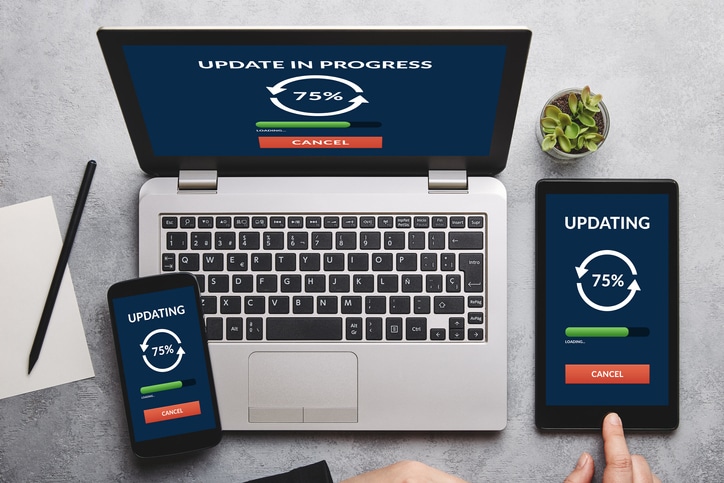Good patch management’s vital
Reading Time: 2 minutes4th March 2019 | Modified: 19th December 2022Categories: Tech News
Making sure all your company’s software is up-to-date is essential for the secure and efficient running of your business.

However, proper “patch management” is often poorly practised by many organisations and for many it’s a foreign concept.
While large corporations usually have sufficient resources to ensure the latest patches are applied to all systems and technology, smaller organisations may not have such luxuries. For them, the task of applying patches takes too much time because employees are expected to concentrate on front-end activities such as sales or customer service.
And yet, failure to apply software upgrades can fundamentally undermine the security and success of your organisation. That’s why patch management software could help your business by ensuring timely updates to multiple endpoints.
More complex
Gary Jowett, from Computer & Network Consultants in Brighton, said: “Workforces are becoming increasingly flexible, working away from the office using laptops, tablets and smartphones. This makes patch management much more complex than it was ten years ago. So, it’s important that all endpoints in your business are fully protected from any vulnerabilities as soon as a new update becomes available.”
Some organisations use prioritisation to ensure their users are protected from big threats but not slowed down by a plethora of patches for less important applications.
Such prioritisation may benefit a busy sales force that’s on the road all day seeing clients. It gives them the opportunity to skip some less important updates but must apply a vital security patch at the start of the working day.
It’s difficult to avoid falling victim to a cyber-attack if your organisation is still running technology that’s no longer supported by patches from the technology vendor.
The danger of using obsolete software was exemplified by the WannaCry ransomware attack. Many NHS hospitals were initially unable to apply any patches because their equipment still used Windows XP which isn’t supported by Microsoft any more. They were among a number of organisations worldwide that weren’t fully aware of all the vulnerable technology endpoints they had.
In fact, Microsoft did eventually issue a patch for XP users but this was very unusual.
Internet of Things
The challenge of managing patches efficiently is set to get much bigger as the Internet of Things continues to connect more business and household devices to corporate and personal networks. Thermostats, refrigerators, televisions, smart meters – a whole host of seemingly innocuous pieces of technology that provide access via internet connectivity to networks and confidential data.
Gary added: “The growing scale of the issue means it’s well worth considering outsourcing your patch management to specialists who have the expertise to keep your organisation’s network safe and secure. They’ll have in-depth knowledge of the current threats posed by hackers. Keeping patch management in-house to reduce costs can be a false economy with disastrous consequences.”


